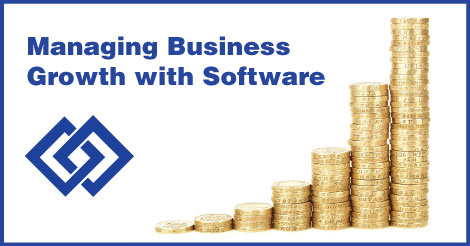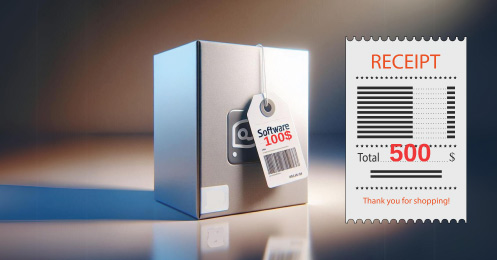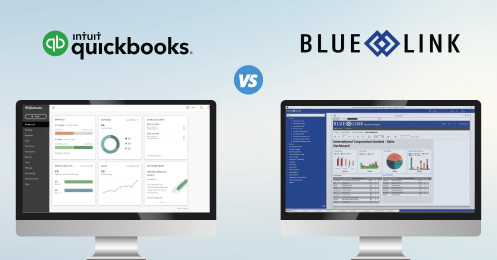As a growing wholesale distribution business, you may begin to experience common growing pains as your order and transaction volume increase. You need to be prepared for business growth and be able to grow with it. It can be troublesome when limitations on transaction volume and data storage in existing systems lead to system crashes, slow run times and corrupt databases. Having employees manually update multiple systems and checking inventory information when managing multiple sales channels is a huge waste of time. Not to mention a lack of integration between existing systems leads to double entry and manual work. But remember to think about ALL areas of your business including how you run your warehouse. Unreliable inventory information can cause a high number of picking, packing and shipping errors and can be detrimental to your business.
If any of the above sounds familiar, then it is probably time for your company to start thinking about effectively managing growth, and planning for the future. Here are some options.
- Implement an introductory software system or add-on functionality to an existing introductory system to automate certain processes
- Invest in a robust ERP system to manage all of your accounting and inventory management needs
- Hire an employee to manage the additional workload
Choosing between these three options can be tough so the first step to making the right decision is to further educate yourself on the available options. Take the time to learn about the different levels of software sophistication and what systems are available, compare hiring an employee vs. investing in software, and finally educate yourself on ERP and how it differs from an introductory system.
What is ERP?
Enterprise Resource Planning or ERP software is a fully integrated system designed to be an end-to-end solution for all aspects of business operations. As an all-in-one solution, ERP helps businesses streamline and automate their processes by providing inventory management, accounting, order entry, warehouse management, and customer relationship management. In addition, some ERP solutions will also provide various add-on components such as point of sale, lot tracking, landed cost tracking, eCommerce integration and barcode scanning in order to meet the needs of customers in various industries.
If you have decided that investing in a sophisticated ERP system is the best option for your business, there are several other factors to consider in order to find the right solution.
Make Sure Everyone Involved Is Ready
Before spending time and money researching systems, watching demos, and investing in an ERP system, make sure everyone involved is 100% committed to making the switch to ERP. Implementing an ERP system will be a significant project, especially if moving from introductory software or manual processes. To be successful in finding and implementing a solution, ensure you have commitment from all employees who will be interacting with the system and the management team. Get people on board by effectively communicating benefits and involving those who will use the system in the search process.
Ask Yourself: Are employees excited about making the switch to ERP?
Deployment Method
Most ERP solutions are offered either as a cloud-based implementation or on-premises implementation.
- On-Premises: software is hosted on-site at the client’s location and the client is responsible for purchasing and maintaining necessary hardware and servers
- Cloud-based: or SaaS (Software as a Service) software is hosted off-site on the vendor’s equipment and the client pays the vendor on-going monthly fees to access the software through the internet.
Ask Yourself: Which is the best option for your company? Read our article to determine: Cloud vs On-Premises ERP
Don’t Rush the Process
Investing in software is a big decision that will require commitment from your team, so don’t rush the process! Look into a number of systems, but only shortlist a few – you want to make sure you can thoroughly analyze your top choices, and this can only be done properly if you shortlist only a handful. Spend time researching and determining what exact functionality you need. Don’t be afraid to ask questions during the initial discovery call with vendors to make sure you’re shortlisting software that is a good fit for your company. It’s easy to be swayed by all the bells and whistles that ERP software can offer you but sometimes just a standard Middle-Tier system can offer more than enough functionality for your business.
Ask Yourself: Do you have enough time to invest in a proper software search?
Set a Realistic Budget
Make sure you set a budget based on real-world data and not just arbitrary numbers. Most ERP systems will vary in cost depending on:
- The level of sophistication and required functionality
- Business processes
- The deployment method you choose
- Number of users
A fully integrated ERP suite is an expensive project, however consider the efficiencies and savings that can be achieved by implementing ERP and automating processes. Research and take a look at pricing guides before speaking closely with vendors, so that you have a realistic idea of costs. When comparing vendors, make sure you are comparing apples to apples and that the costs include similar features and services. A good way to evaluate costs is to compare the cost of ERP with the cost of a similar investment, such as hiring an additional employee. That being said, sometimes companies simply are not large enough, or financially stable enough to invest in an ERP solution. For smaller businesses with limited functionality requirements, an introductory system can be of great use. Spend the time to really evaluate your business processes to figure out where you need help, and set a realistic budget based on your requirements.
Ask Yourself: Are you ready for this kind of financial commitment?
Additional Benefits
Aside from being able to more effectively manage your company’s growth, there are several other benefits to choosing a sophisticated ERP system:
- Ability to automate processes across departments
- Data is stored and managed in a central database – there is one point of entry and one system to manage all your business needs
- Automatic creation of meaningful financial and management reports
- Increased accuracy and more informed decision making with easily accessible real-time data
So, after considering everything mentioned above, do you think your company is ready for a robust ERP system?










